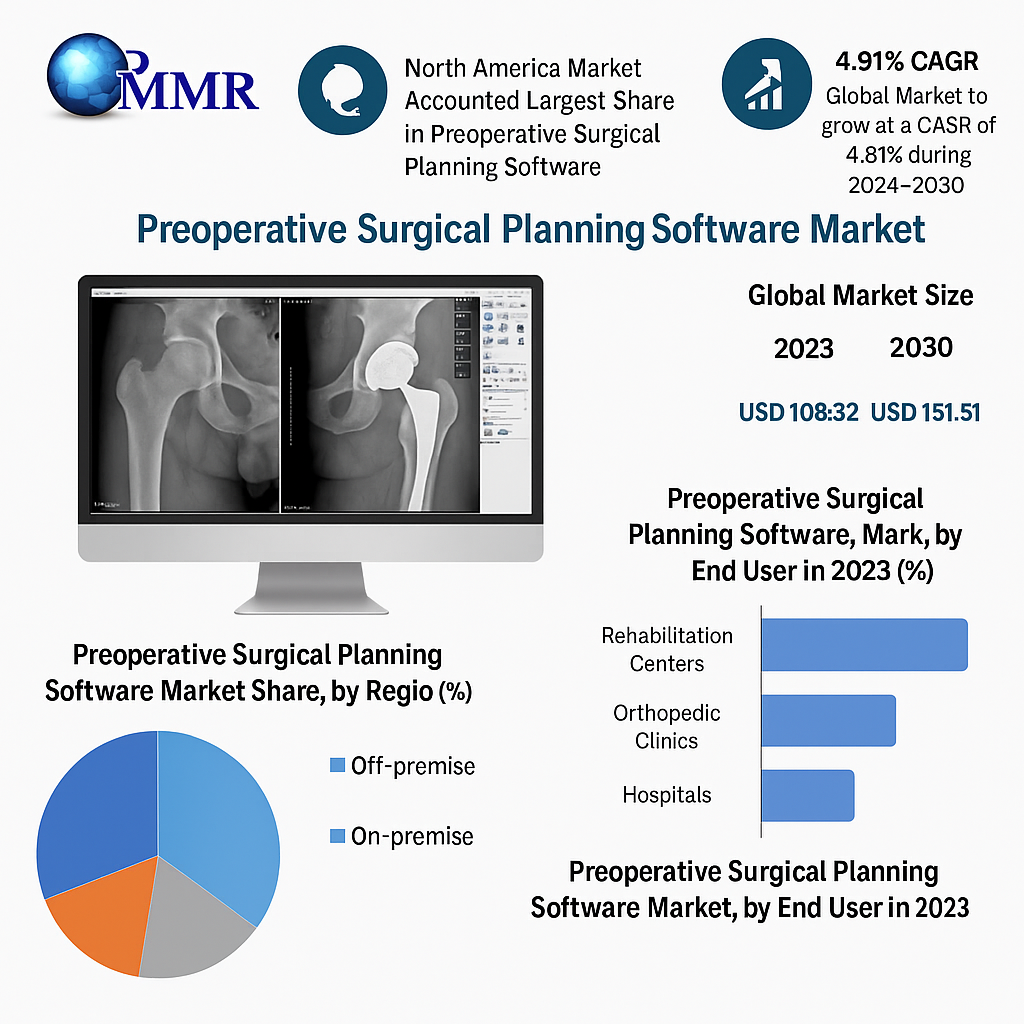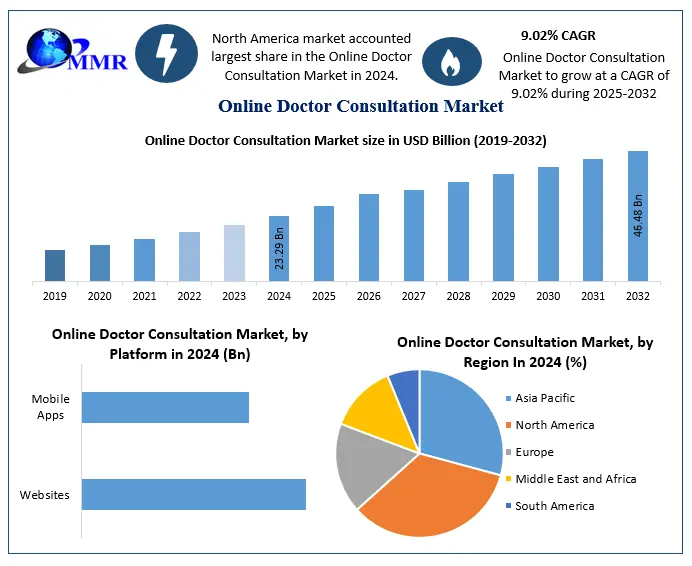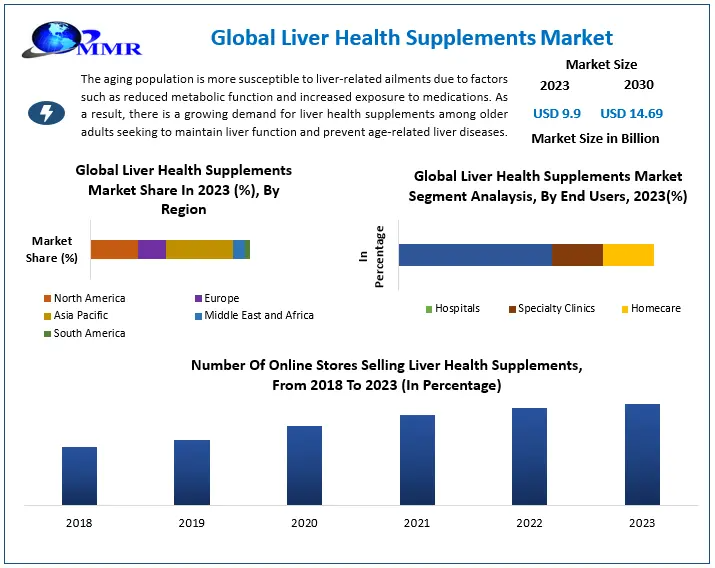The global preoperative surgical planning software market size is set for robust expansion, projected to increase from USD 108.32 million in 2023 to USD 151.51 million by 2030. This represents a Compound Annual Growth Rate (CAGR) of 4.91% over the forecast period.
Market Definition & Estimation
Preoperative surgical planning software is designed to assist surgeons in creating comprehensive, patient-specific surgical plans. These digital tools facilitate better visualization of anatomy, simulate surgical procedures, and contribute to higher precision during surgery. By integrating imaging data and surgical knowledge, the software enhances patient outcomes and reduces operative time and complications.
As of 2023, the market is valued at USD 108.32 million and is forecasted to reach USD 151.51 million by 2030. This steady growth trajectory reflects increasing reliance on advanced medical technologies in surgical practices worldwide.
Market Growth Drivers & Opportunities
Technological Advancements: Integration of technologies such as 3D modeling, artificial intelligence (AI), and augmented reality (AR) is transforming surgical planning. These technologies help in simulating surgeries, thereby reducing intraoperative risks and improving patient care.
Increase in Surgical Procedures: The number of complex surgeries, especially orthopedic and neurological interventions, is increasing globally. Accurate planning is essential in these procedures to minimize complications and improve surgical efficiency.
Aging Population: With an aging global population, there is a surge in age-related conditions such as osteoarthritis and spinal disorders, driving demand for surgeries that require detailed preoperative planning.
Growing Demand for Minimally Invasive Procedures: Surgeons are increasingly opting for minimally invasive procedures. Preoperative planning software is crucial for mapping these procedures to ensure success and reduce recovery times.
Emerging Markets: Developing regions with growing healthcare infrastructure are adopting these technologies at a rapid pace. Improvements in healthcare spending and training are enabling broader software penetration.
Segmentation Analysis
The preoperative surgical planning software market is segmented by type, application, and end-user.
By Type
-
Off-Premise (Cloud-Based): These solutions offer flexibility, remote accessibility, and centralized data management. Cloud-based models are gaining popularity due to their scalability and reduced infrastructure costs.
-
On-Premise: Preferred by institutions that prioritize data security and local control, on-premise solutions offer robust performance but require higher upfront investment and IT maintenance.
By Application
-
Orthopedic Surgery: This segment holds the largest share of the market. Applications include joint replacement planning, trauma surgeries, and spinal procedures.
-
Neurosurgery: Software used in brain and spinal surgeries for accurate navigation and risk mitigation. This is a growing segment with increasing software penetration.
-
Dental & Orthodontics: Planning for dental implants and orthodontic treatments using anatomical modeling and simulation.
-
Others: Includes general surgery, cardiovascular procedures, and specialty surgical areas where precision planning improves outcomes.
By End-User
-
Hospitals: These remain the dominant users, as hospitals often perform complex surgeries requiring sophisticated planning tools.
-
Orthopedic Clinics: Specialized centers are adopting these solutions to improve surgical accuracy and reduce time in the operating room.
-
Rehabilitation Centers: Some centers use surgical planning data to develop personalized post-operative recovery plans and rehabilitation strategies.
Country-Level Analysis
United States
The U.S. is a leader in adopting preoperative surgical planning software. High levels of healthcare expenditure, a well-established medical infrastructure, and early integration of advanced technologies position the U.S. as a key market contributor. The rising number of orthopedic and neurosurgical procedures, along with increased demand for minimally invasive surgery, continues to fuel market growth.
Major hospitals and research institutions in the U.S. are investing in AI-driven planning tools, and the adoption of cloud-based platforms is increasing due to ease of access and improved data management.
Germany
Germany represents a significant portion of the European market. With a strong medical technology sector and focus on precision medicine, German healthcare providers are rapidly adopting digital surgical planning tools. The country’s healthcare system supports innovative technologies, particularly in orthopedic and spinal surgery.
Germany also benefits from a structured regulatory environment and investment in healthcare digitization, which creates a favorable climate for market expansion.
Competitive Landscape
The market is moderately competitive, with a mix of established players and emerging startups. Companies are competing on factors such as software capability, integration with existing hospital systems, and user interface simplicity.
Key Strategies Include:
-
Innovation: Companies are continually enhancing their platforms with AI, machine learning, and AR capabilities to differentiate their offerings.
-
Strategic Partnerships: Collaborations with healthcare providers, academic institutions, and device manufacturers are common, helping software developers expand market reach.
-
Global Expansion: To capture growing demand in emerging markets, players are expanding geographically, often through local partnerships or distributors.
-
Customer Support & Customization: Customizable features tailored to specific surgical fields and robust after-sales support are becoming competitive advantages.
To view Full Report:
The global preoperative surgical planning software market is evolving rapidly, driven by technological innovation, growing surgical volumes, and the need for higher precision in medical interventions. As healthcare providers strive to enhance patient outcomes and optimize surgical workflows, demand for advanced planning solutions is set to grow.
Hospitals, clinics, and surgical centers are increasingly recognizing the value of detailed surgical planning, not only in improving safety but also in reducing overall healthcare costs by minimizing surgical complications and operative time.
Looking forward, the market is expected to benefit from continued investments in healthcare digitization, increasing global access to advanced technologies, and a growing emphasis on patient-specific care.
Healthcare technology stakeholders are encouraged to explore strategic investments, partnerships, and research collaborations in the preoperative planning domain to capture value and advance surgical precision worldwide.



